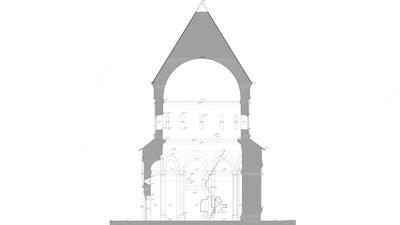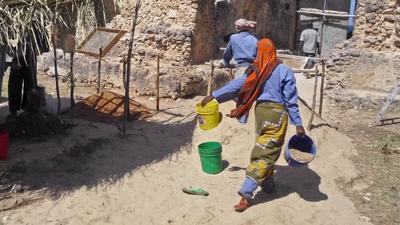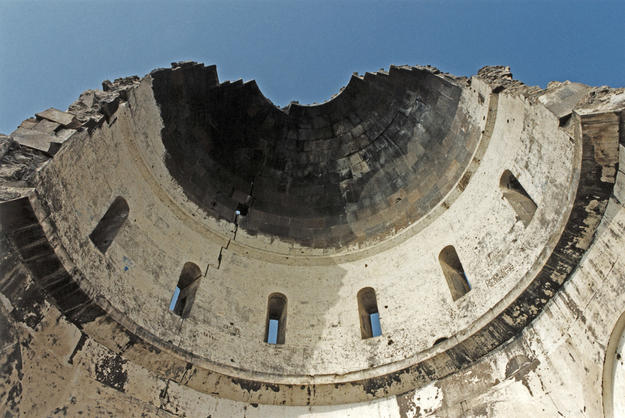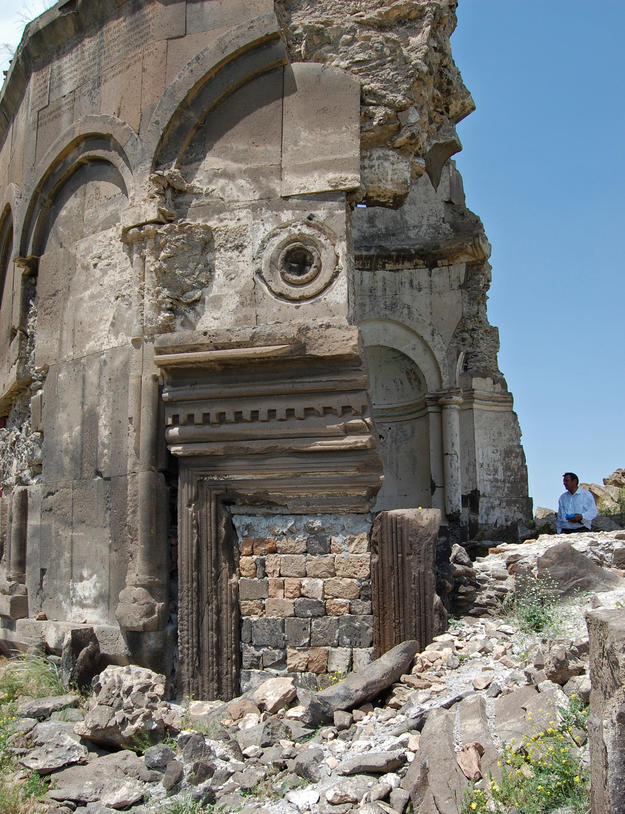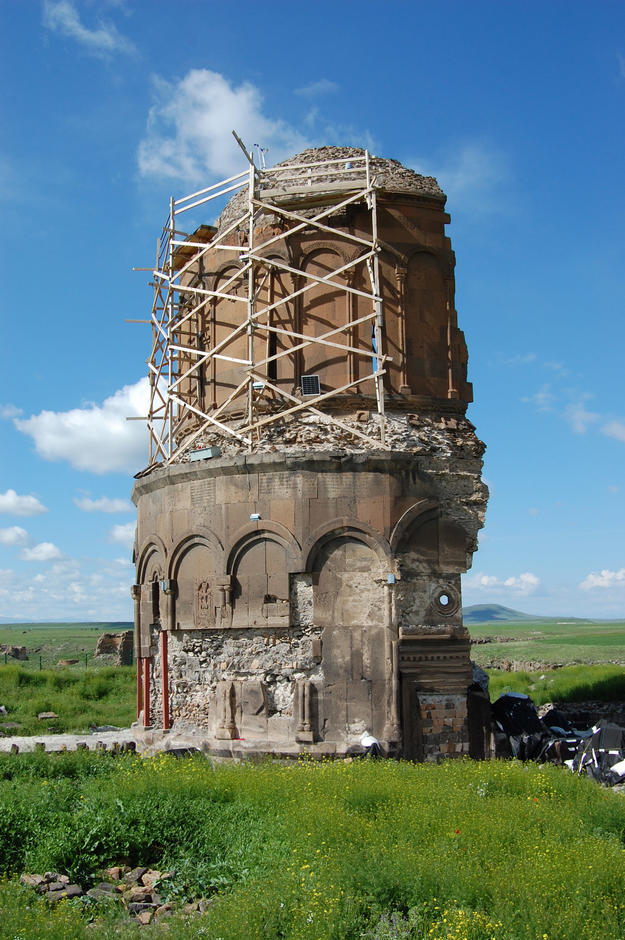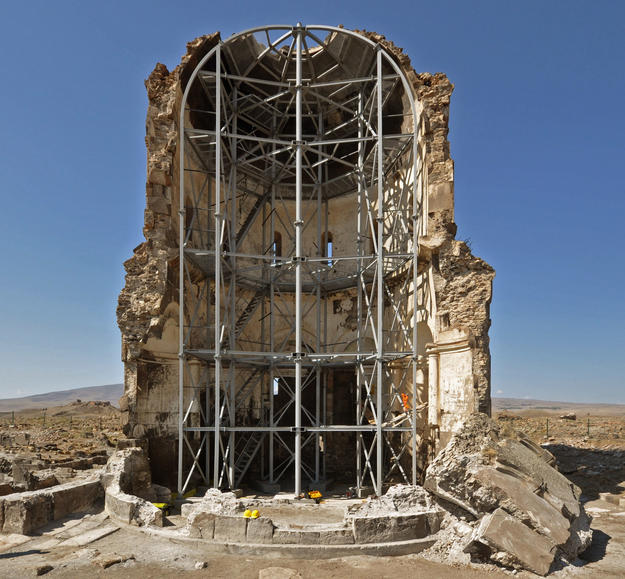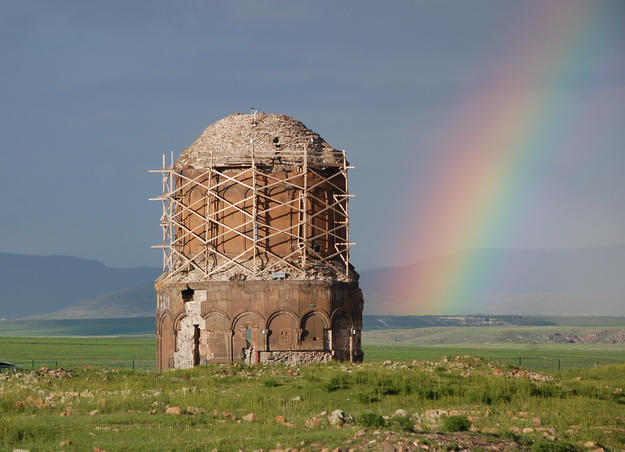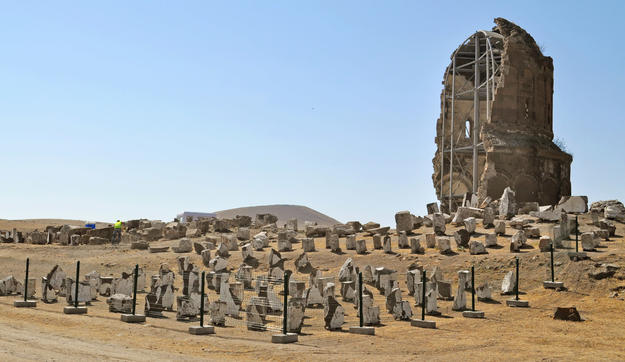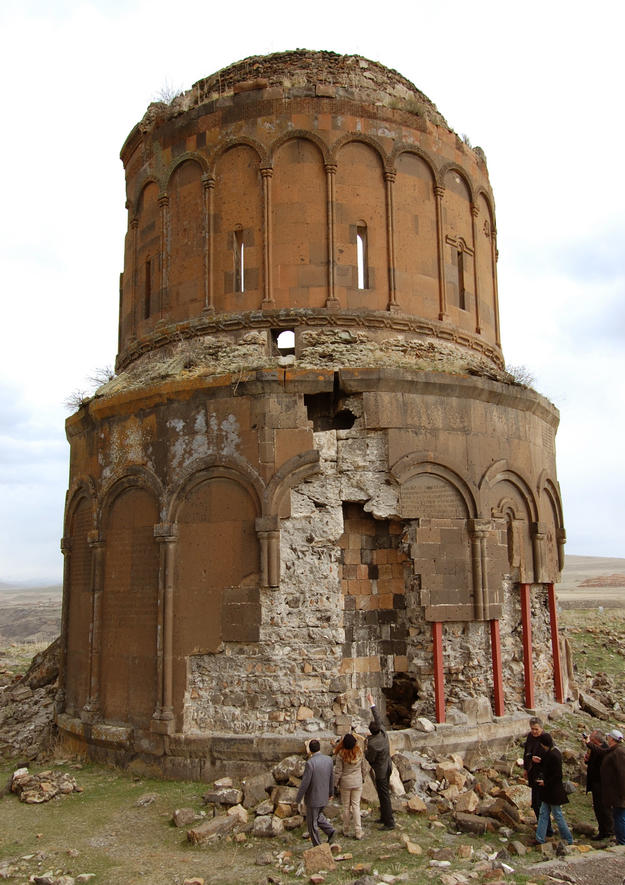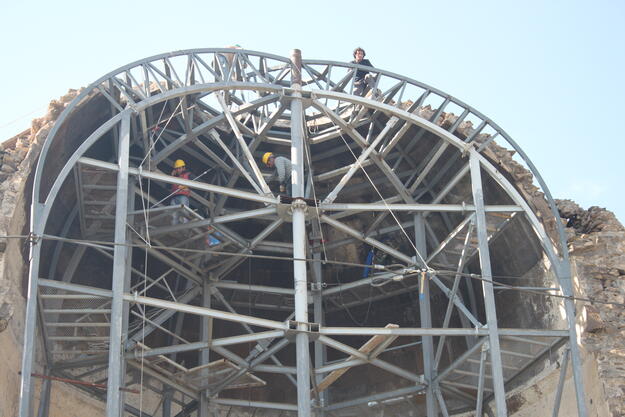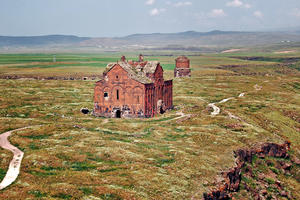Site and Significance
A Hidden Gem of the Medieval Age
Surp Amenap’rkitch, or the Church of the Holy Redeemer, is one of the few structures still standing at Ani from the prosperous Armenian Bagratid period in the tenth and eleventh centuries CE. Located in modern-day eastern Türkiye in the heart of the archaeological zone of Ani, the Church of the Holy Redeemer was built by Prince Abulgharib Pahlavuni to be a reliquary for a piece of the True Cross. Completed in 1035, it is often cited as a noteworthy example of the origins of ecclesiastical architecture in Armenia. The church’s design is geometrically sophisticated, innovative, and skillfully crafted, and many of the decorative exterior panels and surviving sections contain Armenian script that reveals details of the history of the church and the Ani settlement.
Severe Damage Leads to a Fragile Structure
Archaeological work was conducted in Ani by the Imperial Academy of Science in Saint Petersburg during the occupation of the region by the Russian Empire at the end of the nineteenth century. Preceding World War I, the Imperial Academy repaired a large vertical crack in the church, which was most likely caused by seismic events. However, due to the war, research and further work were abandoned. Then in 1930, lightning hit the church, splitting it in half. One side of the church collapsed, while the other was left standing, leaving the structure in an extremely fragile and unstable state. The church remains in a compromised state and could be lost to total collapse in the near future. In addition to the damage caused by major weather events, the church has been subject to vandalism; stones have been removed from the lower portions of the structure, further weakening its foundation.
Our Involvement
Conservation and Public Awareness
The need to conserve the Church of the Holy Redeemer gained international attention in 1996 when the archaeological zone of Ani was placed on the inaugural World Monuments Watch. The site was included on the Watch again in 1998, 2000, and 2002. Field missions to Ani were conducted in 1996 and 1998, leading to documentation and analytic work.
In 2009, renewed interest in conservation work at Ani led to an agreement with Turkish authorities to begin preliminary planning for fuller stabilization and protection of the Church of the Holy Redeemer, as well as nearby Ani Cathedral. The goal of this preservation plan was to conserve, consolidate, and strengthen the remains of the church so it could be studied and enjoyed by future generations.
Long-Term Intervention
The long-term plan for the church’s conservation includes replacing the vandalized stone elements, conserving the collapsed yet extant elements of the structure for reinstallation or display, strengthening the remaining walls and dome, and protecting the dome and wall construction with a waterproof membrane. Conservation work began in the summer of 2012. The first phase, which included stone documentation, construction of scaffolding, and excavation around the base of the church, was completed in 2015. In 2016, after two decades of continuous efforts, the Archaeological Site of Ani was inscribed on the UNESCO World Heritage List.
In 2018, World Monuments Fund (WMF) completed most of the conservation work, including documentation, condition surveys, and emergency measures and stabilization, at the church. The goal of the second phase is the stabilization of the complete structure with the recovery of carved stone to replace the temporary timber buttress. The final phase of the program will include raising public awareness of the site and improving conditions in the archaeological zone for visitors.
An Innovative Multilingual App
In 2023, a new mobile app that highlights the diverse history and architecture of Ani was launched. Available in Armenian, English, and Turkish, the app will allow researchers and casual visitors alike to engage with the site more deeply.
Learn more
World Monuments Fund safeguards cultural heritage around the globe, ensuring our treasured places are preserved for present and future generations.
Sign up for our newsletter to receive regular updates on our projects, stories from the field, upcoming events, and more!
![]()
World Monuments Fund's work at Ani Archaeological Site has been made possible, in part, by support from the U.S. Ambassadors Fund for Cultural Preservation (AFCP); the U.S. Embassy Ankara; The J.M. Kaplan Fund; ALIPH; Friends of Heritage Preservation; and Tianaderrah Foundation/Nellie and Robert Gipson.
Videos
